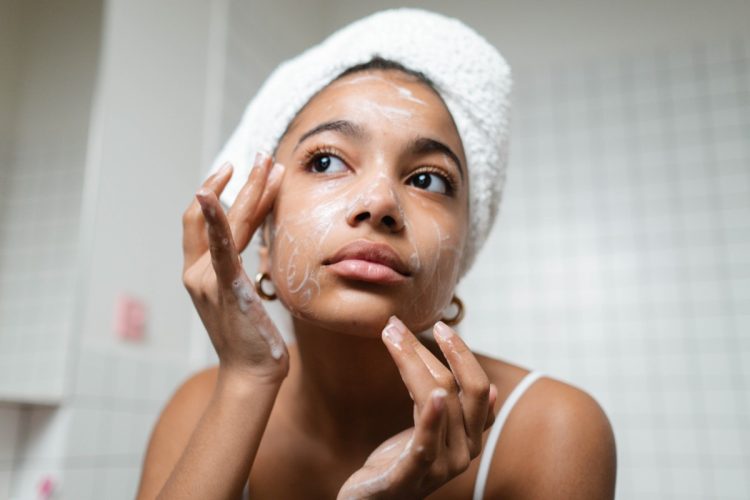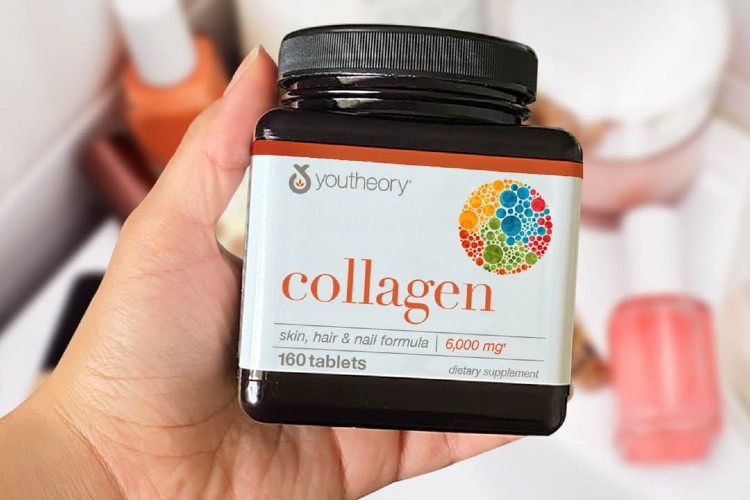Starting a weight loss journey is like stepping onto a rollercoaster. It’s thrilling, full of ups and downs, and it’s not just your body that’s along for the ride—your skin is on this journey too. As you wave goodbye to those extra pounds, you might notice some uninvited guests: stretch marks and loose skin. But don’t sweat it. There are proven techniques to help you tighten your skin after weight loss.
As a matter of fact, you can set improving your skin as a motivation for weight loss. Even if you go through ups and downs while losing weight—like hitting a weight loss plateau—you have perfect skin to look forward to and motivate you to push through. If you want to get better skin while healthily losing weight, here’s how to boost your efforts:
Lose weight gradually
Most people are left with excess skin that can look loose or saggy after losing weight, especially when they lose weight quickly. This happens because the skin, once stretched by extra weight, doesn’t have time to tighten up as your body gets smaller. Two proteins that give your skin elasticity, elastin and collagen, can also become less effective and affect the skin’s ability to retract after weight loss. That said, it’s best to avoid rapid weight loss and take things slow. Avoid crash diets that promise quick results. Instead, opt for a gradual weight loss plan. This gives your skin time to adjust and maintain its elasticity.

Do exercises that make you sweat more
While most associate exercising with burning calories, it also serves another purpose: it makes you sweat, which is good for your skin. Sweat contains dermcidin, a natural antibacterial peptide that flushes out and destroys bacteria that could harm your skin through irritation. Another benefit of sweating is that it increases blood circulation, delivering more nutrients to your skin. With sufficient nutrients—like vitamin A for a youthful glow—your skin will look better as you lose weight.
Thus, choose exercises that’ll have you work up a sweat. One of these includes high-intensity interval training workouts. This alternates short, explosive exercise with brief recovery periods until you’re tired.

Wash your face after workouts
Sweat is good for your skin, but you don’t want it to stick around. Bacteria can hitch a ride in your sweat and clog your pores, which can cause skin problems like acne. That’s why it’s essential to wash your face and body after your workout. Use an antibacterial cleanser that doesn’t contains sulfates, alcohol, and fragrances, as these are common skin irritants.
Eat right
When you’re losing weight, your diet matters, not just for your waistline but also for your skin. Cut out high-sugar and high-fat foods. Sugar can damage collagen, the protein that gives your skin its elasticity. And fat can lead to clogged pores. Instead, load up on skin-friendly foods rich in fibers, fatty acids, antioxidants, and minerals. Better still, collagen-boosting foods like fish, tomatoes, leafy greens, and berries can help your body produce more skin-firming proteins. Finally, avoid simple carbohydrates like white bread, as they can cause inflammation.
Drink water more often
Water is a skin essential. It aids the digestive system in flushing out toxins that may cause issues like acne and can even improve firmness. Try to drink at least 3.7 liters of water daily for men and 2.7 liters for women. To make it more appealing, add some fruit slices to the water.
Skincare routine during weight loss
Your skincare routine can make a significant difference in how your skin responds to weight loss. Begin with a gentle cleanser to remove dirt, sweat, and excess oils from your skin. Moreover, aim to exfoliate your skin 2-3 times a week to remove dead cells that can clog your pores and cause a dull complexion. You can exfoliate either with a physical scrub or a chemical exfoliant like an alpha or beta hydroxy acid. Finally, use a moisturizer daily to hydrate the skin and lock in moisture. Consider one with ingredients like hyaluronic acid or ceramides.
If you’re experiencing loose skin, you can incorporate products like skin-tightening creams and retinol serums to promote collagen production and cellular turnover, which can lead to more elastic skin over time. Remember, skincare is a marathon, not a sprint. Consistency is the key.
Sun protection
Sun damage can age your skin and cause it to lose its firmness. So, make sure you’re using sunscreen daily. It’s one of the easiest and most effective methods to protect your skin.

Collagen supplements
Collagen is a critical protein in our bodies that provides structure and elasticity to our skin. However, as we age, our natural collagen production slows down, which can lead to signs of aging like wrinkles and sagging skin. Weight loss can also lead to a loss of skin elasticity.
That’s where collagen supplements come in. They provide your body with the amino acids it needs to produce more collagen. Studies have shown that regular intake of collagen supplements can improve skin elasticity and hydration, reducing the appearance of wrinkles and loose skin.
While collagen supplements can’t replace a balanced diet, they can be a helpful addition to your routine. They come in various forms, including powders, capsules, and gummies, so you can choose the one that best suits your lifestyle.
Massage your skin
Facial massage stimulates blood flow, which brings fresh oxygen and nutrients to your skin cells. Pitching your skin can also boost collagen levels, leading to firmer, tighter skin over time. This can be especially helpful if you’re dealing with loose skin after weight loss. You don’t need to visit a spa. Self-massage at home can be just as effective. Consider incorporating tools like a jade roller into your routine, or simply use your hands. Use gentle, upward strokes to massage your skin, and pay extra attention to areas where you’re experiencing loss of firmness.
Non-surgical treatments
If you’re okay with a bit of help from technology, consider treatments like radiofrequency or microcurrent devices. These non-surgical options stimulate collagen and help tighten your skin after weight loss.
Summary
While it’s normal for your skin to take a while to tighten up after losing weight, a healthy diet and a good skincare routine that include moisturizing and firming products can help this happen faster.
Moreover, maintaining a gradual and steady weight loss can help the skin adjust better, reducing the likelihood of excessive loose skin. Body contouring exercises, such as strength training and resistance exercises, can also help tone muscles and improve the appearance of loose skin. And for those considering non-surgical options, procedures such as radiofrequency or microcurrent can tighten loose skin.


